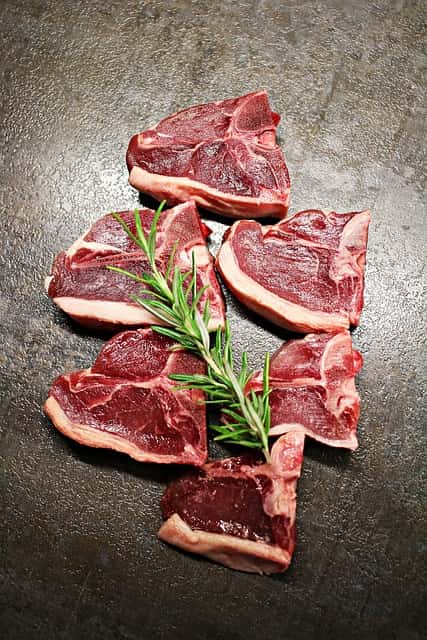Lamb has long been celebrated for its rich, distinctive flavour and tender texture. While there are many ways to prepare it, few techniques rival the transformation that occurs through slow cooking. By gradually breaking down the connective tissues and allowing flavours to deepen over time, slow cooking elevates lamb from a simple protein to a melt-in-the-mouth experience. Whether you’re preparing a midweek comfort dish or a show-stopping Sunday roast, slow cooking is an approach that never fails to deliver.
Read more:
- How Long Does It Take to Cook Hamburgers on a George Foreman grill?
- Applebee’s Happy Hour: A Budget-Friendly Family Dining Experience
- Top Dessert Ideas for Your Next Dinner Party
The Science Behind Slow Cooking
At the heart of slow cooking lies the process of collagen breakdown. Lamb, particularly the tougher cuts such as shoulder, shanks, and neck, contains higher amounts of connective tissue. When cooked at a low temperature over a long period, collagen converts into gelatin, which imparts a luscious, silky texture to the meat and adds richness to the dish. This process not only makes the meat more tender but also infuses it with depth and complexity.
Moreover, slow cooking allows for the gradual release and integration of fats and intramuscular marbling, resulting in a balanced, flavourful bite every time. It’s a method that respects the natural composition of lamb and coaxes out its full potential without the need for excessive seasoning or additives.
Choosing the Right Cut for Maximum Flavour
Not all cuts of lamb are created equal, especially when it comes to slow cooking. While leaner cuts like the loin or rack are best suited to quick cooking methods, bone-in and fattier cuts truly shine when given the time to tenderise slowly.
Here are some top choices:
- Shoulder – Packed with flavour and natural fat, lamb shoulder becomes fork-tender and juicy when slow-cooked.
- Shanks – Ideal for braising, shanks yield an incredibly rich and satisfying result.
- Neck – Often overlooked, lamb neck becomes exquisitely tender and perfect for casseroles or stews.
These cuts are not only delicious but also more affordable, making slow cooking both an economical and gastronomic win.
Building Layers of Flavour
One of the true benefits of slow-cooked lamb is how well it absorbs and carries complex flavours. Aromatics like garlic, rosemary, and thyme infuse deeply over time. Similarly, spices such as cumin, cinnamon, and smoked paprika develop greater nuance as they cook slowly.
To enhance the flavour profile, consider techniques such as:
- Browning the meat first – This step develops Maillard reaction compounds, which contribute savoury, umami-rich flavours.
- Deglazing the pan – Adding wine, stock or even balsamic vinegar helps to lift caramelised bits from the pan, enriching the cooking liquid.
- Using robust ingredients – Root vegetables, pulses, and preserved lemons pair beautifully with the hearty nature of lamb.
The end result? A deeply flavourful dish that feels both rustic and refined.
A Tradition Rooted in Culture
Slow cooking has deep roots in culinary traditions across the globe. From Greek kleftiko and Moroccan tagine, to Indian nalli nihari and British hotpot, lamb is a staple in many slow-cooked dishes. Each culture brings its own ingredients and techniques, but all share the common belief that time and patience are key to extracting the best flavour from lamb.
By adopting these time-honoured methods, you’re not only enhancing your home cooking but also participating in a rich, shared culinary heritage.
Embracing the Convenience of Slow Cooking
Beyond the culinary benefits, slow cooking offers practical advantages for today’s busy households. Whether you use a slow cooker, Dutch oven, or oven-safe casserole dish, the method is largely hands-off. After some initial prep, you can leave it to cook while you get on with your day.
The gentle, steady heat reduces the risk of overcooking, making it ideal for those who may be less experienced in the kitchen. Plus, leftovers reheat beautifully, often tasting even better the next day as the flavours continue to develop.
For inspiration and step-by-step ideas, explore a variety of slow cooked succulent lamb recipes that showcase just how versatile and rewarding this method can be.
Through Gentle Heat and Time
Slow-cooking lamb is about more than just preparing a meal—it’s about unlocking the full potential of this exceptional meat. Through gentle heat and time, flavours blossom, textures soften, and even the humblest cuts become luxurious. It’s a method that delivers consistent results and timeless satisfaction, whether you’re cooking for one or feeding a crowd.
If you’ve never tried slow-cooked lamb before, now is the perfect time to start. With just a few key ingredients and a little patience, you’ll discover why this approach continues to stand the test of time.

